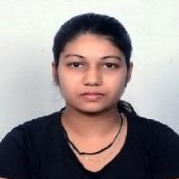
Raveena Garg
Work place: Department of ECE, UIET, Panjab University, Chandigarh
E-mail: gargraveena2@gmail.com
Website:
Research Interests: Wireless Communication, Wireless Networks, Artificial Intelligence, Computational Learning Theory, Computer Networks, Engineering, Agricultural Engineering
Biography
Raveena Garg, born in 1995, is a research scholar in the Department of Electronics and Communication Engineering at University Institute of Engineering and Technology, Panjab University, Chandigarh, India. She received her B. Tech in Electronics and Communication Engineering from Punjabi University, Patiala in 2018 and nowpursuing master degreein Electronics and Communication from University Institute of Engineering and Technology, Panjab University, Chandigarh.Her current research interests are optical wireless communication.
Author Articles
Reach Enhanced Is-OWC System using Double Sideband Suppressed (DSS) DP-QPSK
By Raveena Garg Gurpreet Kaur Naresh Kumar
DOI: https://doi.org/10.5815/ijem.2022.05.04, Pub. Date: 8 Oct. 2022
Insophisticated situations coming from developing multimedia applications and the exponential increase in the number of smart sensors and devices, future wireless networks will ensure high reliability, low latency, scalability, as well as better quality-of-service.Optical wireless communication (OWC) becomes more important because it can take advantage of the light medium's unique selling points over RF, such as immunity to electromagnetic interference (EMI), ultra-high capacity, the ability to communicate wirelessly through water, and the ability to provide additional security. Dual polarization (DP) enabled multilevel modulations in inter satellite optical wireless communication (Is-OWC) are potential and capacity building techniques to cope up with bandwidth explosive demands. Therefore, inthis work, a reach enhanced single channel Is-OWC is proposed using Double Sideband Suppressed (DSS) dual polarized (DP) Quadrature phase shift keying (QPSK) modulation. Spectral efficiency of carrier is improved through DSS technique using Mach-Zehndar modulator (MZM) and millimeter wave (mm- wave). Further, pulse width reduction, nonlinear effects suppression, carrier phase estimation (CPE) and frequency offset estimation (FPE) is performed by Digital signal processor (DSP) in coherent receiver of PDM-QPSK. Performance comparison of DP-QPSK and DSS-DP-QPSK is performed at different link lengths in terms of log BER and error vector magnitude (EVM%). Results revealed that proposed system i.e., DSS-DP-QPSK at 160 Gbps data rate covers 44,000 km Is-OWC distance with acceptable log BER as compared to 40,000 km in DP-QPSK due to improved spectral efficiency of carrier spectrum of proposed system.
[...] Read more.Other Articles
Subscribe to receive issue release notifications and newsletters from MECS Press journals